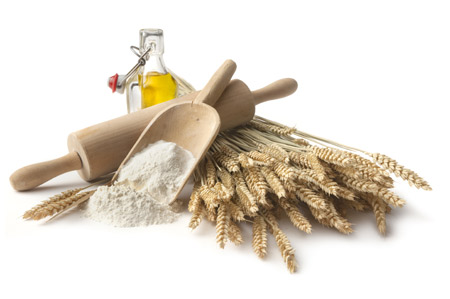Wheat finds price traction
Category: Grains
 (Agriculture.com) – Wheat took on a new tone this week. With harvest pressure finally subsiding and fund liquidation seeming to be near an end wheat was finally able to make a push higher, ending the week more than 70-cents up from last week’s close in the winter wheats. Minneapolis old crop soared this week, surging a full dollar up from last Friday’s close before finishing the week also about 70-cents higher.
(Agriculture.com) – Wheat took on a new tone this week. With harvest pressure finally subsiding and fund liquidation seeming to be near an end wheat was finally able to make a push higher, ending the week more than 70-cents up from last week’s close in the winter wheats. Minneapolis old crop soared this week, surging a full dollar up from last Friday’s close before finishing the week also about 70-cents higher.
The extra push for Minneapolis July futures was due to heavy rains disrupting loadings and rail traffic in Duluth.
For going on two years, wheat has generally followed corn primarily because of its ability to substitute as a feed grain. But after this week’s price action, wheat looks like it is beginning to stand on its own as it managed an impressive rally even with corn stumbling around most of the week.
Coming into this growing season, world wheat stocks were near record highs and wheat bulls were scarce. However, with a harsh winter that killed off a significant amount of the Black Sea and Europe’s wheat those world wheat stocks were diminishing before the Northern Hemisphere even broke dormancy. Europe has managed to have a respectable growing season so far this spring, but the Black Sea certainly can’t say the same.
Southern Russia has continued to experience the lingering drought issues that were the core of the drought two years ago. The dryness has expanded into the Lower and Middle Volga River Valleys this spring, which are key production regions. Eastern Ukraine has also continued to see weather issues. Production estimates for Russian wheat are starting to work their way downward; this week SovEcon decreased their projection by 3 MMT from their previous estimate to 50 MMT, a 6 MMT drop from last year’s production. They made a point to say that those estimates could come down further.
Both Russia and Ukraine have reassured their customers that they will be able to keep up their usual export pace because of large carryover supplies. With their weather continuing dry and warm, I’m not sure the market is all that reassured.
Russia’s downward revisions come after last week’s report out of China that their wheat production would drop by 10 MMT from their earlier estimates, leaving them producing 110 MMT, down 7 MMT from last year. USDA has them projected to import 2.5 MMT, but the trade is starting to factor in about a 5 MMT import from China. If that materializes, it would be a very big deal.
Canada has run into problems of its own with too much moisture keeping some fields from being planted while other fields stand in water, delaying spraying. The US Northern Plains have also received good moisture and the market is beginning to factor in big spring wheat yields with protein likely to be lower than normal.
The Southern Hemisphere is trying to wrap up their winter wheat planting season. Both Argentina and Australia have reported that their plantings and production will be down this year, further adding to a declining world wheat supply situation.
This could explain why buyers are stepping up to the plate. US wheat export sales have gotten off to a stellar start this marketing year, with last week’s sales of 842 TMT about double the previous week’s. It’s probable that sales will slow down with the rising prices and the higher dollar, but it’s clear that buyers are eager to get sales on the books now that stocks are plentiful here in the US and becoming more questionable in other regions.
With all of wheat’s increasingly bullish fundamentals, weather in the Midwest will still be the major market mover for the next few weeks. The intense drought in the southern Midwest appears to be expanding north; some forecasters are suggesting that the western Midwest will eventually see those same conditions. If it weren’t for most of Iowa seeing consistent rains, corn and soybean prices would already be much higher. The Delta and Southeast have already had their share of stress and corn yields are declining quickly. Soybean yields are also coming down but slowly, as they still have time to reverse losses if the rains come, which is not really in the forecast.
As we move into the critical stages of corn and bean production, the weather looks to create more volatile price action and wheat will surely be pulled along. But in the bigger picture, wheat has its own story to tell and the trend appears to higher. If corn also moves higher, it only enhances wheat’s positive fundamentals. If corn gets the needed rains and moves lower, wheat will probably struggle initially, but in the end should be able to stand on its own.
———
This publication is strictly the opinion of its writer and is intended solely for informative purposes. It is not to be construed, under any circumstances, by implication or otherwise, as an offer to sell or a solicitation to buy or trade in any commodities or securities herein named. Information is obtained from sources believed to be reliable, but is in no way guaranteed. Futures and options trading always involve risk of loss. Past performance is not indicative of future results.




